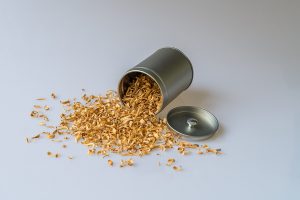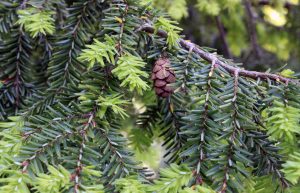Connect with Nature – Make Your Own Herbal Tea

Guest blogger Rebecca Kennedy
This blog post was written by guest blogger Rebecca Kennedy.
Consumed since antiquity across ancient civilizations, from China to the Mediterranean, herbal tea continues to be a popular beverage today.
More formally known as a tisane, herbal tea is generally defined as a steeped drink made from an infusion of herbs, seeds, spices, flowers, leaves or other plant material. It is sometimes taken for medicinal or health benefits. Strictly speaking, a tisane is not actually considered a tea, as types of the latter derive from the leaves of the plant Camellia Sinensis, while tisanes are made from the parts of other plants and typically contain no caffeine.
You have probably noticed many herbal teas at the grocery store — chamomile, ginger and mint are examples. But did you know that it can be pretty easy to make your own? Using plants collected from a recent hike in the woods or your backyard, or purchased from a trusted farmer or market, you can create your own personalized blend!

All you need is a pot or kettle, fresh cold water (filtered if possible), your chosen ingredient(s) and a mug for serving. A strainer is quite useful if you wish to strain your tisane before drinking. Alternatively, you can fashion a homemade tea bag from cheesecloth in which to put your herbal bouquet. Last, you may wish to get an airtight container for storing your blend.
Here are some recipes to get you started.
Licorice Peppermint Tea
My friend Kristin absolutely adores this blend during the winter.
- ½ cup + 2 Tbsp cut licorice root
- ½ cup cut peppermint leaf
Combine ingredients well in a bowl. Steep 1 tablespoon of blend per one cup of boiling water.
Sam’s Cold Comfort Tea
Sam, Nature Canada’s Website and Social Media Coordinator, makes the following whenever she has a cold.
- 2 slices of lemon
- About a quarter of a ginger root, peeled
- 1½ cups of water
Fill a small pot with the water. Add the lemon and ginger and bring to a boil. Boil for 5 minutes. Pour into a mug and sweeten with honey if desired.
 Ted, Nature Canada’s Senior Conservation Manager, recommends a similar cold-fighting concoction of garlic and lemon steeped in boiling water and then adding honey. In addition, Ted also enjoys using these plants in particular for homemade tisanes:
Ted, Nature Canada’s Senior Conservation Manager, recommends a similar cold-fighting concoction of garlic and lemon steeped in boiling water and then adding honey. In addition, Ted also enjoys using these plants in particular for homemade tisanes:
- Eastern hemlock – the needles
- Wintergreen
- Strawberry – the plants with their blooms
For the Eastern hemlock, choose the lightest green branchlets (the young and tender ones). For all three, use a handful or two and steep in boiling water for about 5 minutes.
We hope these recipes will inspire you to create your own special tisane!
As with any new-to-you plant, please be sure to first check in with a healthcare professional before trying. Your local public library is a great place to find herbal tea recipe books as well as information on safe plants to consume and their benefits and effects.
Acknowledgements: Merriam-Webster, The Kitchn, The Visual Food Encyclopedia, The Tea Book, Encyclopedia of Human Nutrition



